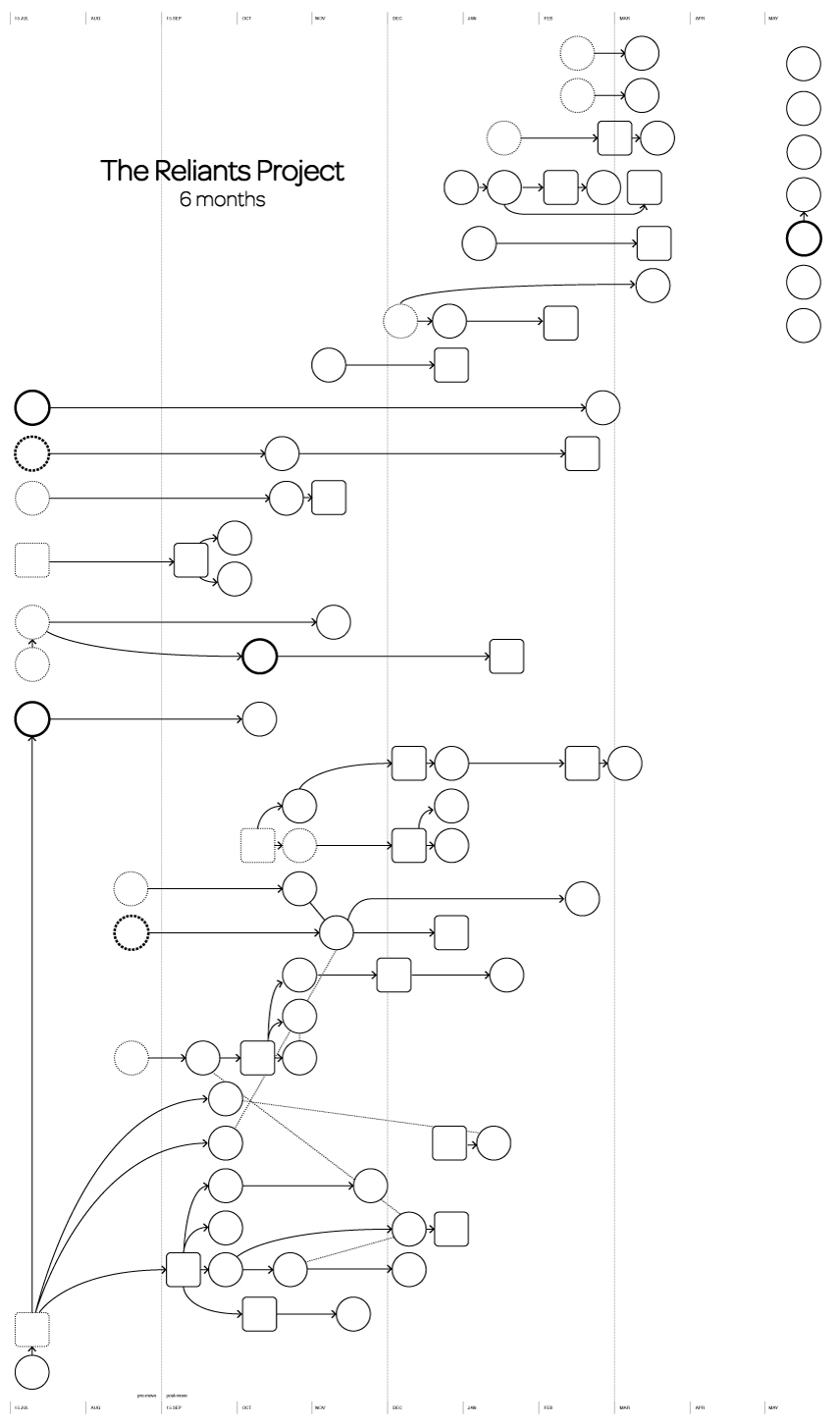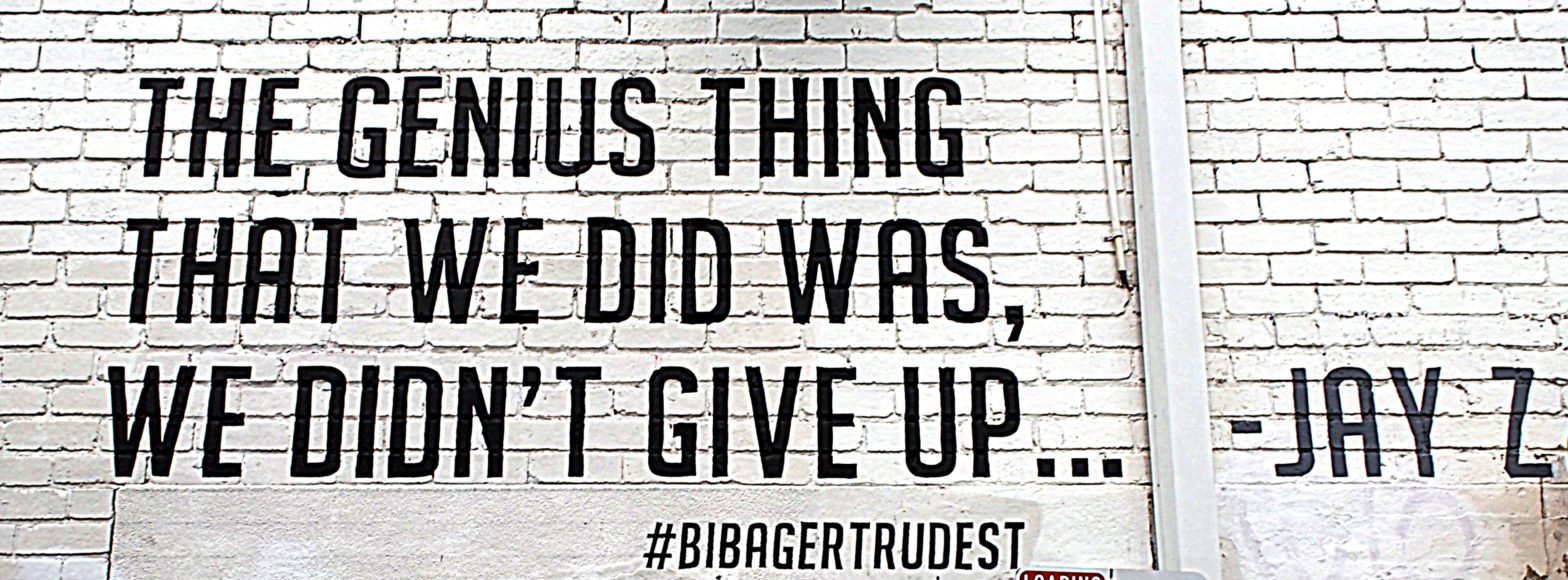It’s been 3 more months and I feel like I have more questions than answers. No doubt a more dynamic visualisation tool would be incredibly useful, but I also feel that the information I’m keeping track of is incomplete. Just to remind readers (and myself) why I am doing this, my goal is understand how adults make friends they can rely on by tracking my own experience building a personal network after moving to a new city. I call this type of friend a “reliant” in honour of my new home, London. Relocation is one of the most jarring experiences for individuals and often results in significant changes to their personal network. It’s also increasingly common.
reliant /re·li·ant/ noun.
1. a British car manufacturer.
2. a person on which someone depends.
Here’s the visualisation as it stands today, 6 months into my journey. As before, the data has been anonymised by removing labels. If you’re interested in the first 3 months, I wrote about them here.
- Connections are categorised into 4 groups: local contacts, non-local contacts, local reliants and non-local reliants.
- Situations are organised into 2 groups: local and non-local. If I meet someone outside of a structured interaction, I don’t consider it an event.
- When connections were made and events attended are indicated by their location on the timeline. When existing contacts made the first introduction is also indicated this way.
- Known mutual connections are shown with either a solid or dotted line (depending on whether I made the introduction or it pre-dated me knowing either individual).
The diagram doesn’t keep track of frequency of interactions and I don’t include new connections if there’s no real initiative to maintain contact. In the top right I keep track of people in my existing network (pre-move) whom I’ve spent time with but haven’t introduced me to anyone new. So far I’ve only included co-workers with whom I’ve built a friendship outside of work.

![]()
Over the 6 months my London network has grown almost 3x. My current network of about 68 people breaks down roughly as follows (based on how social networks are often categorised):
- 32 acquaintances (ie. see them socially)
- 20 friends (ie. would invite to a group dinner)
- 12 close friends (ie. often hang out one-on-one)
- 4 reliants (ie. would ask to help move flats)
The 24 people I met before moving to London make up roughly 50% of the reliant, close friend, and friend categories (in addition to 25% of my acquaintances). I’ve met an average of 7 people per month since my move (steadily with little fluctuation) and at least 7 times we’ve been able to quickly identify a mutual acquaintance. While I haven’t done the digging on Facebook or LinkedIn to surface more mutual connections, the recently-published research by Facebook about degrees of separation makes me think they would be plentiful. Facebook calculates my average degrees of separation from everyone as 3.
So, what have I learned?
Existing local networks don’t always translate to new connections. While this pattern was originally a hunch, it has continued to persist and is probably one of the most surprising realisations. In hindsight it makes sense, since those friends have been immersed in their London life for years. People in my network that have moved to London after me have been much more active about facilitating new connections through organising group events.
- More than 66% of all direct introductions were made by non-local contacts (11 of 16)
- My pre-existing local network has only made 3 direct introductions (7% of all new connections)
- In only 3 cases has someone introduced me to more than one person
No clear frontrunner between introductions and events yet. So far there is no data to indicate that direct introductions are superior to meeting people at events. Since most events I attend are self-selecting and quite niche (meetup groups, industry events, interest-based organisations), this isn’t really surprising.
- Direct introductions and connections from events each make up 50% of my acquaintance and friend groups
- Close friend and reliant groups are still dominated by my existing network and direct introductions, but that may be a function of time more than anything else
“Super-connectors” accelerate the process of meeting new people. A handful of connections are still responsible for a disproportionate number of the people I’ve met (through hosting groups or recommending events). While this certainly increases the quantity of people I meet, the jury is still out on whether it will result in more new connections or any new reliants.
To be honest, I’m kicking myself for not keeping track of all the people I’ve met, however brief or casual. As a result, I’ve started maintaining a spreadsheet to track more information and am looking into other ways to dynamically visualise this data.
Open questions:
- How does intention, empathy and vulnerability impact making connections?
- Does the potential for value exchange play a role in which connections are actively nurtured?
- With the convergence of work and personal life, is it useful to separate connections into these categories?
- Should I keep track of other individual details such as gender, age, sexual orientation, marital status, life stage, personality, nationality, etc?
- Is it helpful to keep track of other contextual details such as day of week, time, location, structure, event size, etc?
- Would it be interesting to visualise how new connections transition between acquaintance, friend, close friend and reliant groups over time?
As always, welcome any comments or thoughts.

Pingback: The Reliants Project: 12 months | with ease
Pingback: The Reliants Project: 9 months | with ease